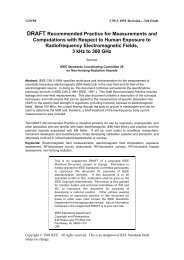An introduction to the quark model
An introduction to the quark model
An introduction to the quark model
Create successful ePaper yourself
Turn your PDF publications into a flip-book with our unique Google optimized e-Paper software.
Few-charge systems His<strong>to</strong>ry of <strong>the</strong> <strong>quark</strong> <strong>model</strong> Mesons Baryons Multi<strong>quark</strong>s and o<strong>the</strong>r exotics Outlook<br />
Oc<strong>to</strong>ber 1974 revolution<br />
In November 1974, <strong>the</strong> J/ψ was discovered simultaneously at<br />
BNL and SLAC, in quite different experiments<br />
Lep<strong>to</strong>n-pair production in hadronic collisions (Ting)<br />
e + e − collisions (Richter)<br />
Not recognised immediately, since extremely narrow,<br />
Eventually identified as (c¯c)<br />
Several o<strong>the</strong>r states (ψ ′ , χ, . . . ) seen<br />
Charmed mesons seen also (G. Goldhaber)<br />
As well as charmed baryons<br />
Note: double-charm baryons not yet confirmed!<br />
Beautiful confirmation of <strong>the</strong> charm prediction<br />
<strong>An</strong>d asymp<strong>to</strong>tic freedom, which make <strong>the</strong> Zweig rule more<br />
effective for J/ψ than for φ.<br />
JMR Quark Model

















